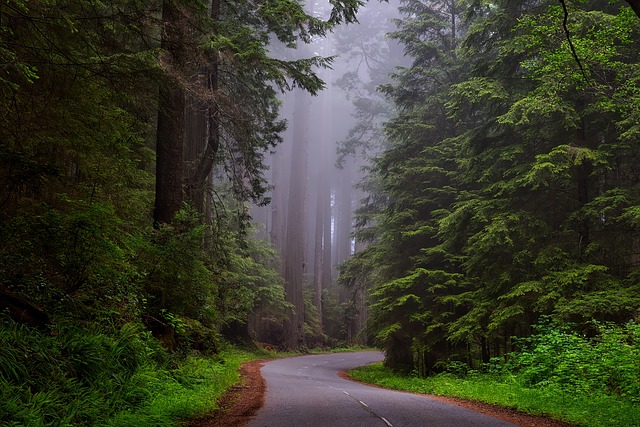
So, why are redwoods protected? In our blog posts, we often talk about how Redwood Burl Inc. is an ethically salvaged or reclaimed redwood company. This means we get our redwood cutting nothing down, pulling anything out of the ground, or otherwise harming the redwood forests or the surrounding nature. In California and much of the Pacific Northwest, we protect public land with redwoods on it. However, many do not understand why this protection is necessary. After all, logging is a necessary activity to sustain our society, so many question why we can’t just practice sustainable logging like much of the Pacific Northwest. In this post, we aim to answer all the questions that come up when we ask, “Why are redwoods protected?”
Background Information
First, a bit of history. From the start of logging in the mid-1800s to the late 1960s, there was practically no regulation on redwood logging. After the gold rush and consequent bust, logging became the main industry in Northern California. Redwood was an ideal candidate for buildings because it is pest-free, rot and fungi resistant, and fire tolerant. This perfect storm of great lumber with no regulation meant that we decimated the redwood forests. In 1968, the U.S. Congress established the Redwood National Park. Many state parks, national parks, and expansions of existing parks protecting Redwoods have since followed.
Redwood Forests
Now, we look closer at redwood and redwood forests. While harvesting paper pulp trees is sustainable, this sustainability is impossible for redwoods. Redwoods are ancient trees. Second growth redwoods, younger than old-growth, are still hundreds of years old. Old-growth redwoods are older, sometimes close to 2,000 years. If you want to learn more about the differences between them, read this article. Because they take so long to grow and mature, the numbers of old-growth forests are bad. Before 1850, there were 2 million acres of old-growth redwood forest. Today, only 5% of old-growth forest remains. Old-growth forests cannot regrow and compete with faster-growing trees that take light from their sprouts.
Why Is It Important to Protect Redwoods?
Of course, you may ask, so what? Well, there are many benefits of Redwoods. Species such as the Marbled murrelet, Northern spotted owl, Black bear, and Humboldt marten call the redwoods home and are already endangered. Without the redwoods, countless more species would be endangered. Redwoods also clean and regulate water for rivers and streams by shading them and filtering the runoff, further aiding animals that rely on these sources of water.
In addition, old-growth redwoods take in 5x more carbon dioxide than any other forest on the planet. This acts to impede climate change and regulate greenhouse gases. With clear-cut deforestation prevailing in many parts of the globe, this is becoming more important every day. They are also incredible climate controllers. The redwood forests are the regulatory force that keeps the temperature and humidity suitable for endless species of animals and plants.
Protecting Redwoods is Personal
Finally, a very personal reason to protect redwoods. The redwoods are beautiful. They are giants of the earth, and the emotional connection that you form to redwoods and the redwood forests is one of kinship. We love the redwoods, and the redwoods love us too! Nature such as the redwoods gives us many health benefits, providing us with a place to relieve stress, exercise, and reflect. While not the most concrete example of their purpose, it is an important detail.
What Are We Doing About It?
At Redwood Burl Inc., we only get our redwood using ethical salvaging methods. This means we cut nothing, we pull nothing out of the ground, and we do not go on public land and illegally get redwood. We believe 100% in the mission of the State of California and the U.S. Federal Government to protect these incredible trees, and we only get our own wood following the strict protocols that they and we have set in place. When you purchase redwood from us, you know that we did not harm any redwood in creating that slab or piece. If you have any questions about our products, contact us!
Sequoia sempervirens, or coast redwood, is an extraordinary part of our world. It is incredible to experience them for oneself, and they are a key part of the Northern California ecosystem. While preservation is important in all parts of life and nature, the redwoods are especially important. Their effect on every creature, big, small, or green and not really a creature, cannot be understated. We hope that this post has enlightened you as to their importance.
Tags: ethical salvaging, ethically salvaged, protecting redwoods, reclaimed redwood, redwood, redwood burl, sequoia